
INSTRUCTION MANUAL
Fingertip Pulse Oximeter model MD300C23
General Description
Oxygen Saturation is a percentage of Oxyhemoglobin (HbO2) capacity, compounded with oxygen, by all combinative
hemoglobin (Hb) capacity in blood. In other words, it is consistency of Oxyhemoglobin in blood. It is a very important
parameter for the Respiratory circulation System.
Many respiratory diseases can result in oxygen saturation being lowered in human blood. Additionally, the following
factors can reduce oxygen saturation: Automatic regulation of organ dysfunction caused by Anesthesia, Intensive Posto
-
perative Trauma, injuries caused by some medical examinations.
That situation might result in light-headedness, asthenia, and vomiting. Therefore, it is very important to know the
oxygen saturation of a patient so that doctors can nd problems in a timely manner.
The ngertip pulse Oximeter features small size, low power consumption, convenient operation and
portability. It is only necessary for a patient to put one of his ngers into the ngertip photoelectric sensor for
diagnosis, and a display screen will show oxygen saturation.
parts list
Complete set (g. 1):
Main Unit – 1 pcs.,
Instruction Manual with Warranty Card – 1 pcs.,
Hang Lace – 1 pcs.,
batteries – 2 pcs.
MeasureMent principle
Principle of the Oximeter is as follows: A mathematical formula is established making use of Lambert Beer Law
according to Spectrum Absorption Characteristics of Reductive hemoglobin (RHb) and Oxyhemoglobin (HbO2) in
glow and near-infrared zones.
Operation principle of the instrument is Photoelectric Oxyhemoglobin Inspection Technology is adopted in
accordance with Capacity Pulse Scanning and Recording Technology, so that two beams of dierent wavelength
of lights (660nm glow and 940nm near infrared light) can be focused onto a human nail tip through a clamping
nger-type sensor.
A measured signal obtained by a photosensitive element, will be shown on OLED
display through process in electronic circuits and microprocessor shown.
Diagram of Operation Principle
1. Red and Infrared-ray Receipt Tube.
2. Red and Infrared-ray Emission Tube. (g.2)
precautions for use
1. Do not use the pulse oximeter in an MRI or CT environment.
2. Do not use the pulse oximeter in situations where alarms are required.
3. Explosion hazard: Do not use the pulse oximeter in an explosive atmosphere.
4. The pulse oximeter is intended only as an adjunct in patient assessment. It must be used in conjunction with
other methods of assessing clinical signs and symptoms.
5. Check the pulse oximeter sensor application site frequently to determine the positioning of the sensor and
circulation and skin sensitivity of the patient.
6. Do not stretch the adhesive tape while applying the pulse oximeter sensor. This may cause inaccurate readings
or skin blisters.
7. Before use, carefully read the Instruction manual.
8. The pulse oximeter has no SpO2 alarms; it is not for continuous monitoring, as indicated by the symbol.
9. Prolonged use or the patient’s condition may require changing the sensor site periodically. Change sensor site
and check skin integrity, circulatory status, and correct alignment at least every 4 hours.
10. Inaccurate measurements may be caused by:
- autoclaving, ethylene oxide sterilizing, or immersing the sensors in liquid may cause inaccurate readings.
- signicant levels of dysfunctional hemoglobins (such as carbonxy- hemoglobin or methemoglobin)
- intravascular dyes such as indocyanine green or methylene blue
- high ambient light. Shield the sensor area (with a surgical towel, or direct sunlight, for example) if necessary.
- excessive patient movement
- high-frequency electrosurgical interference
- venous pulsations
- placement of a sensor on an extremity with a blood pressure cu, arterial catheter, or intravascular line.
- hypotension, severe vasoconstriction, severe anemia, or hypothermia
- ngernail polish or false ngernails may cause inaccurate SpO2 readings.
- the patient is in cardiac arrest or is in shock.
11. The pulse oximeter can be used before or after sports. Operation in sport procedure is not recommended)
12. Please follow the law of the local government to deal with used battery.
Battery installation
1. Shift the bottom panel and then open it (g.3a).
2. Put the two AAA batteries into battery cassette
in correct polarities (g. 3b).
3. Close the bottom panel (g. 3c).
WARNING!
Replace batteries when low power indncator “
” is lit or if after pressing Power button there is no indication
on display.
Please remove the battery if the Oximeter will not be used for a long time.
Do not use re-chargable batteries.
How to use
WARNING! Do not tremble the hand with oximeter during measuremrnt
1. Open the clamp (g. 4)
2. Plug one of ngers into rubber hole of the oximeter (it is best to plug the nger
thoroughly) before releasing the clamp.
3. Press the button once on front panel.
DISPLAY MODES.
After turning on the oximeter, each time you press the power switch, the oximeter will switch to another display mode,
there are 6 display modes shown as follows:
1
SpO
2%
PR
bpm
95
84
2
SpO
2%
PR
bpm
97
74
3
SpO
2%
PR
bpm
98
77
4
SpO
2%
PR
bpm
77
5
SpO
2%
PR
bpm
77
6
SpO
2%
PR
bpm
97
74
4. Read correspondent data from display screen:
SpO
2%
bpm
97
74
Pulse Wave
SpO
2%
PR
bpm
95
84
PR signal
intensity Bar
graph
PR
SpO
2
BRIGHTNESS ADJUSTMENT
When you press the power switch for a long time (more than one second), the brightness of the oximeter will
be changed by degrees, there are 10 levels on brightness; the default level is level four.
HanG lace installation
1. Thread thinner end of the hang lace through the hanging hole (g. 5).
2. Thread thicker and of the lace through the threaded end before pulling it tightly.
Maintenance anD storaGe
Replace the batteries timely when indncator “ ” is lit.
Clean surface of the ngertip oximeter before it is used in diagnosis for patients.
Remove the batteries inside the battery cassette if the Oximeter will not be operated for a long time.
It is best to preserve the product in a place where ambient temperatures -20-55r and humidity is <93%.
It is recommended that the product should be kept in a dry environment anytime. A wet ambient might aect its
lifetime and even might damage the product.
Please follow the law of the local govern ment to deal with used battery.
specification
Model MD300C23
Display OLED display
SpO
2
measurement range
accuracy
70% - 100%
±2%
Pulse Rate
measurement range
accuracy
30 - 250 bpm
30 - 99 bpm - ±2 bpm;
100 - 250 bpm - ±2%
Measurement wavelengths
red
infrared
660 nm
905 nm
Power source 2 x 1,5V AAA (LR03)
Battery set operating period > 30 hrs.
Max. power consumption 0.075 W
Applicable nger circumference 20-75 mm
Operating conditions
:
Temperature
Relative humidity
5ºС ~ 40ºС
<80%
Storage and transportation environment
:
Temperature
Relative humidity
-25ºС ~ 70ºС
< 93%
Net Weight (without batteries) 31g
External dimension 58 (L) х 30 (W) х 34 (H) mm.
Date of manufacturing Manufacturing Date printed on sticker
Country of Origin PRC
Symbol Denitions
The equipment type is BF
Read User manual before use
Not for continuous monitoring
No critical SpO2 alarm
CE marking in conformity with EC directive 93/42/EEC
Declaration
This device complies with EMC (IEC 60601-1-2:2001, CISPR 11/A2:2002
(Group 1, Class B), IEC 61000-4-2:2001, IEC 61000-4-3:2002, IEC 61000-4-8:2001).
The materials which user can come into contact have no toxicity and no action on tissues, complying with ISO10993-
1,-5,-10.
Manufactured under control and for Little Doctor International (S) Pte. Ltd., 7500A, Beach Road, 11-313 The Plaza
199591, Singapore. Yishun Central P.O. Box 9293 Singapore 917699.
Manufacturer: Beijing Choice Electronic Technology Co., Ltd. (Room 4104, №.A12 Yuquan Road, Haidian District,
100143 Beijing, PRC).
Distributor in Europe: Little Doctor Europe Sp. z o.o., 57G Zawila Street, 30-390, Kraków, Poland
Sales Oce phone: +48 12 2684746, 12 2684747, fax: +48 12 268 47 53
E-mail: biuro@littledoctor.pl
www.LittleDoctor.pl
Guarantee
We grant 2 years guarantee on the product commencing on the date purchase. The guarantee only comes info force
if the data of purchase is conrmed by the dealer’s stamp and signature on Guarantee Card.
This warranty does not extend to, and will be void in respect of any products which have been subjected to misuse,
neglect, re, improper modication, use in violation of the instructions furnished by us repaired by an unauthorized
third party.
trouBlesHoutinG
Problems Possible reason Solution
SpO
2
or
PR can not
be shown
normally
1. Finger is not plugged correctly
2. Patient’s Oxyhemoglobin value is too
low to be measured
1. Retry by plugging the nger
2. Measure other patients to make sure that no
problem exists in the product. Go to a hospital in a
timely manner for an exact diagnosis.
SpO
2
or PR
is shown
unstably
1. Finger might not be plugged deep
enough
2. Finger is trembling or patient’s body is
in movement status
1. Retry by plugging the nger
2. Try not to move
The
Oximeter
can not be
powered on
1. Power of batteries might be
inadequate or not be there at all
2. Batteries might be installed incorrectly
3. The Oximeter might be damaged
1. Please replace batteries
2. Please reinstall the batteries
3. Please contact with local customer service centre
Indication
lamps are
suddenly o
1. The product is automatically powered
o when no signal is detected longer
than 8 seconds
2. Power is too low.
1. Normal
2. Replace the batteries
“Error3” or
“Error4”
Displayed
on screen
1. Low power
2. Receiving tube being shielded
or damaged together with broken
connector.
3. Mechanical Misplace for receive-
emission tube
4. Amp circuit is malfunction.
1. Change new battery
2. Please contact with local customer service center
3. Please contact with local customer service center
4. Please contact with local customer service center
“Error7”
displayed on
screen
1. Low power
2. Emission tube damaged.
3. Current control circuit is malfunction.
1. Change battery
2. Contact with local customer service center
3. Contact with local customer service center
Fig. 5
Fig. 2
1
2
Fig. 1
Fig. 3a Fig. 3b Fig. 3c
enG
tecHnical Description for electroMaGnetic DisturBances
GuiDance anD Manufacturer’s Declaration – electroMaGnetic eMissions-for all eQuipMent anD systeMs
Guidance and Manufacturer’s declaration - electromagnetic emission
The MD300C23 Pulse Oximeter is intended for use in the electromagnetic environment specied below. The customer or the user of MD300C23 Pulse
Oximeter should assure that it is used in such an environment.
Emission test Compliance Electromagnetic Environment – guidance
RF emissions CISPR 11 Group 1
The MD300C23 Pulse Oximeter uses RF energy only for its internal function.
Therefore, its RF emissions are very low and are not likely to cause any interference
in nearby electronic equipment.
RF emissions CISPR 11 Class B
The pulse Oximeter (MD300C23) is suitable for use in all establishments, including
domestic establishments and those directly connected to the public low-voltage
power supply network that supplies buildings used for domestic purposes.
Harmonic emissions IEC 61000-3-2 Not Applicable
Voltage uctuations/ icker
emissions IEC 61000-3-3
Not Applicable
GuiDance anD Manufacturer’s Declaration – electroMaGnetic iMMunity-for all eQuipMent anD systeMs
Guidance and Manufacturer’s declaration - electromagnetic immunity
The MD300C23 Pulse Oximeter is intended for use in the electromagnetic environment specied below. The customer or the user of the MD300C23 Pulse
Oximeter should assure that it is used in such an environment.
Immunity test IEC 60601 test level Compliance Level Electromagnetic Environment – guidance
Electrostatic
Discharge (ESD) IEC
61000-4-2
+/- 6kV contact
+/- 8kV air
+/- 6kV contact
+/- 8kV air
Floors should be wood, concrete or ceramic tile. If oor are covered
with synthetic material, the relative humidity should be at least 30%.
Power frequency (50/60
Hz) magnetic eld IEC
61000-4
3A/m 3A/m Power frequency magnetic elds should be at levels characteristics of
a typical location in a typical commercial or hospital environment.
GuiDance anD Manufacturer’s Declaration – electroMaGnetic iMMunity-for all eQuipMent anD systeMs
tHat are not life-supportinG
Guidance and Manufacturer’s declaration - electromagnetic immunity
The MD300C23 Pulse Oximeter is intended for use in the electromagnetic environment specied below. The customer or the user of the MD300C23 Pulse
Oximeter should assure that it is used in such an environment.
Immunity
test
IEC 60601
test level
Compliance
Level
Electromagnetic Environment – guidance
Radiated RF
IEC 61000-
4-3
3 V/m
80 MHz to
2.5 GHz
3 V/m Portable and mobile RF communications equipment should be used no closer to any part of the Pulse
Oximeter (MD300C23), including cables, than the recommended separation distance calculated from the
equation applicable to the frequency of the transmitter.
Recommended separation distance
d = 1.2√P 80 MHz to 800 MHz
d = 2.3√P 800 MHz to 2.5 GHz
Where P is the maximum output power rating of the transmitter in watts (W) according to the transmitter
manufacturer and d is the recommended separation distance in meters (m).
Field strengths from xed RF transmitters, as determined by an electromagnetic site survey, should be less
than the compliance level in each frequency range. b Interference may occur in the vicinity of equipment
marked with following symbol:
NOTE 1 At 80 MHz and 800 MHz, the higher frequency range applies.
NOTE 2 These guidelines may not apply in all situations, Electromagnetic propagation is aected by absorption and reection structures, objects and
people.
a Field strengths from transmitters, such as base station for radio (cellular/cordless) telephones and land mobile radios, amateur radio, AM and
FM radio broadcast and TV broadcast cannot be predicted theoretically with accuracy. To assess the electromagnetic environment due to xed RF
transmitters, an electromagnetic site survey should be considered. If the measured eld strength in the location in which the Pulse Oximeter (MD300C23)
should be observed to verify normal operation. If abnormal performance is observed, additional measurements may be necessary, such as reorienting of
the relocating the Pulse Oximeter (MD300C23).
b Over the frequency range 150 kHz to 80 MHz, elds strengths should be less than 3 V/m
recoMMenDeD separation Distances Between portaBle anD MoBile rf coMMunications eQuipMent anD tHe
eQuipMent or systeMs - for all eQuipMent anD systeMs tHat are not life-supportinG
Recommended separation distances between
portable and mobile RF communications equipment and Pulse Oximeter (MD300C23)
The Pulse Oximeter (MD300C23) is intended for use in electromagnetic environment in which radiated RF disturbances are controlled. The customer or
the user of the Pulse Oximeter (MD300C23) can help prevent electromagnetic interference by maintaining a minimum distance between portable and
mobile RF communications equipment (transmitters) and the Pulse Oximeter (MD300C23) as recommended below, according to the maximum output
power of the communications equipment.
Rated maximum out put power of transmitter
(W)
Separation distance according to frequency of transmitter (m)
80 MHz to 800 MHz
d = 1.2
√P
800 MHz to 2.5 GHz
d = 2.3
√P
0.01 0.1167 0.2334
0.1 0.3689 0.7378
1 1.1667 2.3334
10 3.6893 7.3786
100 11.6667 23.3334
For transmitters rated at a maximum output power not listed above, the recommended separation distanced in meters (m) can be estimated using the
equation applicable to the frequency of the transmitter, where P is the maximum output power rating of the transmitter in watts (W) according to the
transmitter manufacturer.
NOTE 1 At 80 MHz and 800 MHz, the separation distance for the higher frequency range applies.
NOTE 2 These guidelines may not apply in all situations. Electromagnetic propagation is aected by absorption and reection from structures, objects
and people.
Fig. 4
® Registered trade marks of Little Doctor International (S) Pte. Ltd.
© Little Doctor International (S) Pte. Ltd., 2020
E595/2102/4_ENG
MD300c23
Name and address of retailer
Serial №MODEL
Date of Purchase Purchaser sign
I conrm that surface appearance
and complete set of device is OK:
Retailer stamp
Purchaser sign
GUARANTEE CARD
For more information please visit
WWW.LITTLEDOCTOR.SG
LITTLE DOCTOR INTERNATIONAL (S) PTE. LTD.
Yishun Central P.O. Box 9293 Singapore 917699,
Fax: 65-62342197, E-mail: info@littledoctor.sg
EC-Rep: Shanghai International Holding Gorp. GmbH (Europe).
Eiestrasse 80, 20537 Hamburg, Germany.
Beijing Choice Electronic Technology Co., Ltd.,
Room 4104, №.A12 Yuquan Road, Haidian District,
100143 Beijing, PRC

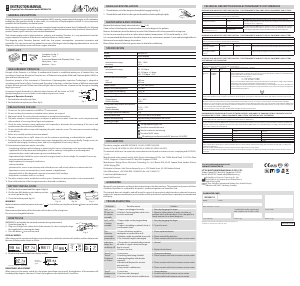


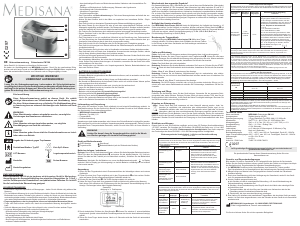
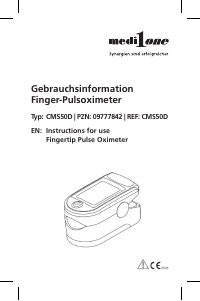
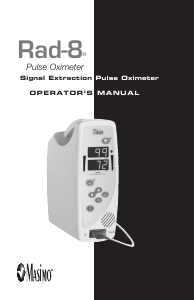
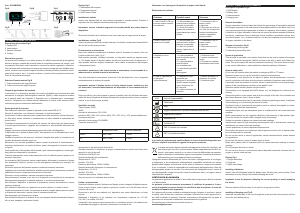
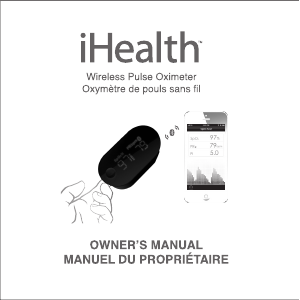
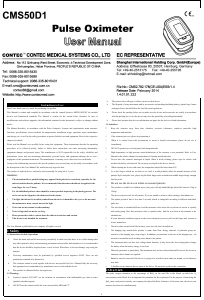


Join the conversation about this product
Here you can share what you think about the Little Doctor MD300C23 Pulse Oximeter. If you have a question, first carefully read the manual. Requesting a manual can be done by using our contact form.